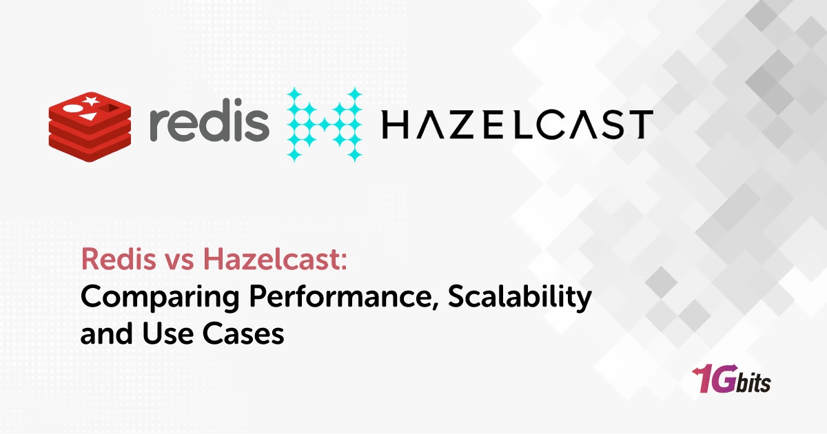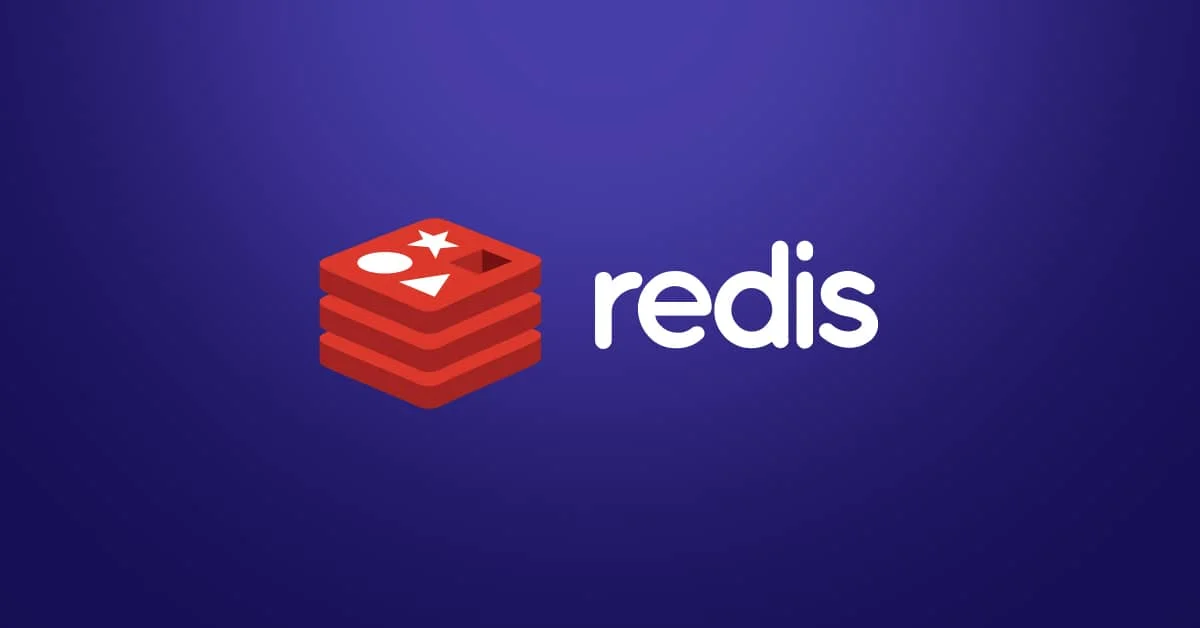In this article, we are going to explore the key differences and similarities between Redis vs Hazelcast, two popular in-memory data stores. By delving into Redis vs Hazelcast performance, Java Redis vs Hazelcast, and other aspects, we’ll uncover the unique strengths of each platform. Whether you're interested in Redis vs Hazelcast comparison or focused on their caching capabilities, we'll break down the difference between Redis and Hazelcast in detail. With insights from Hazelcast vs Redis benchmarks, you'll better understand what is Redis vs Hazelcast and when to choose Redis or Hazelcast for your specific use case. Whether it’s for distributed redis vs hazelcast caching , real-time analytics, or high-availability applications, this Redis vs Hazelcast guide will provide a comprehensive analysis of both.
What is Redis?
Redis, which stands for Remote Dictionary Server, is a powerful and versatile open-source, in-memory data structure store that is commonly used as a key-value database, cache, and message broker. Its primary strength lies in its ability to store data directly in memory, which enables extremely fast read and write operations, making it ideal for applications where low latency and high throughput are critical.
Redis supports a wide variety of data structures such as strings, lists, sets, sorted sets, hashes, bitmaps, hyperloglogs, and geospatial indexes, giving developers flexibility in how they handle and query their data.
At its core, Redis operates as an in-memory database, meaning that all data is stored in RAM. This allows it to deliver millisecond-level response times, which is why Redis is often used for caching, real-time analytics, session storage, and leaderboards.
Despite being an in-memory database, Redis also supports persistence, meaning you can configure it to save data to disk at regular intervals or on specific events. This hybrid approach allows Redis to recover data in the event of server failure, giving it a degree of durability that balances speed with reliability.
As we explore the workings of Redis, we will also examine how it compares to Hazelcast vs Redis in various contexts, particularly in terms of performance, scalability, and use cases.
How Redis Works
Redis functions as a key-value store where data is organized into key-value pairs, similar to a dictionary in programming. Each key is unique, and it can be associated with a wide range of data types, making Redis highly adaptable for various use cases.
The way Redis handles data makes it incredibly fast. Unlike traditional databases that store data on disk and have to retrieve it every time it’s needed, Redis keeps all the data in RAM, allowing instant access.
Redis uses a single-threaded event-driven architecture, which ensures that it can handle thousands of requests per second without the complexity of multi-threaded operations. However, it does allow for multi-threaded I/O, which can help improve performance when handling networking tasks. The single-threaded nature of Redis also simplifies development and eliminates issues related to concurrency.
Redis supports a number of advanced features like replication, pub/sub messaging, and Lua scripting. Replication in Redis is done through Redis Sentinel or Redis Cluster, providing automatic failover and high availability.
Additionally, Redis can be used for pub/sub messaging, where messages are published to channels, and multiple subscribers can listen to these channels for real-time communication. This makes Redis an attractive option for applications requiring low-latency messaging between distributed systems.
What is Hazelcast?
Hazelcast is an open-source, distributed in-memory data grid (IMDG) that provides scalable, highly available, and low-latency data storage and processing capabilities across a cluster of nodes. It is designed to offer distributed computing with in-memory data storage, allowing it to support large-scale applications that need to process data quickly and efficiently across many servers.
Hazelcast offers features like distributed caching, messaging, streaming, and data partitioning, making it a versatile tool for modern distributed systems.
At its core, Hazelcast enables developers to build distributed applications where data can be shared, accessed, and processed in a clustered environment. This means that as more nodes are added to the cluster, Hazelcast automatically partitions and distributes data across these nodes.
By storing data in-memory, Hazelcast reduces the need for disk-based I/O, which helps maintain low-latency data access. Hazelcast also supports high availability through replication and fault tolerance, ensuring that even if one node fails, the data remains available across the cluster.
As we explore how Hazelcast works, we’ll also compare Redis vs Hazelcast to understand where each platform shines in different use cases, such as caching, scalability, and distributed computing.
How Hazelcast Works
Hazelcast operates as a distributed data grid, meaning it organizes and stores data across a cluster of nodes. This architecture allows Hazelcast to scale horizontally, meaning that as you add more nodes to the system, Hazelcast automatically partitions and replicates data across the new nodes, improving both capacity and fault tolerance.
At the heart of Hazelcast’s architecture is its ability to distribute data and processes across many servers or virtual machines. Data is stored in a distributed map, similar to a key-value store, but it can be partitioned and replicated across multiple nodes. This partitioning ensures that no single node contains all of the data, thus eliminating the risk of a single point of failure. Hazelcast replicates data across nodes to maintain availability, so if one node goes down, other nodes can continue to serve requests without any downtime.
In addition to distributed storage, Hazelcast supports distributed processing. With Hazelcast, you can run computations, aggregations, or queries across the entire cluster. This capability allows for massive parallel processing, making it ideal for real-time analytics, financial computations, or any other use case that requires handling large datasets with low latency.
Hazelcast also provides built-in support for messaging and event streaming. Through its distributed messaging features, Hazelcast enables applications to send and receive messages across nodes in real-time, making it useful for event-driven architectures or microservices communication. Moreover, Hazelcast’s integration with other technologies like Apache Kafka and Kubernetes makes it a suitable tool for building scalable, cloud-native applications.
What are the similarities between Hazelcast vs Redis?
Redis and Hazelcast are two prominent tools in the world of in-memory data stores and distributed computing. Both are designed to handle high-performance workloads, offering fast, scalable solutions for data storage and processing. While Redis is often seen as the go-to for caching and session management, and Hazelcast is known for its distributed data grid capabilities, these two platforms share more commonalities than might initially meet the eye. Redis vs Hazelcast comparisons frequently highlight their differences, but it's equally important to recognize the many similarities that make them both popular choices for modern applications. You can alternativies for Redis in Redis Alternatives Article.
1. In-Memory Data Storage
One of the most fundamental similarities between Redis vs Hazelcast is their in-memory data storage design. Both platforms store data in memory (RAM) rather than on disk, which results in incredibly fast read and write operations. By keeping the data in memory, both Redis and Hazelcast can deliver low-latency responses that are crucial for real-time applications, including caching, session management, and analytics.
This design philosophy is what makes Redis vs Hazelcast so powerful when it comes to reducing latency in high-traffic applications. Whether it’s a web server caching user session data or a real-time analytics engine processing large volumes of data, both tools are designed to provide instant access to data without the bottleneck of disk I/O.
2. Distributed Architecture
Both Redis and Hazelcast are built to support distributed architectures, enabling them to scale horizontally across multiple nodes in a cluster. This means that as your application grows, both Redis and Hazelcast can distribute data across additional servers, which helps maintain performance and prevent bottlenecks.
In Redis vs Hazelcast, Hazelcast is typically viewed as more focused on distributed data grid capabilities, but Redis has also introduced clustering features in recent years. Redis Cluster allows for automatic sharding of data across multiple nodes, providing better fault tolerance and scalability, similar to how Hazelcast distributes and replicates data across nodes in a cluster. Both systems thus support high availability and automatic failover mechanisms, which ensures data continuity even if individual nodes go down.
3. Replication for Fault Tolerance
Redis vs Hazelcast also share the concept of replication, which is essential for fault tolerance. Both platforms replicate data across multiple nodes to ensure that data remains available even in the event of hardware failure. In Redis, replication is typically managed through Redis Sentinel or Redis Cluster, allowing for master-slave replication where data is copied from one primary node to one or more replica nodes.
Hazelcast, on the other hand, automatically handles replication within its distributed data grid. Each partition of data is stored across multiple nodes, and if one node fails, Hazelcast can recover the data from a replica on another node. This shared emphasis on replication and high availability makes both Redis and Hazelcast suitable for mission-critical applications where uptime and data integrity are non-negotiable.
4. Caching Capabilities
Caching is one of the most common use cases for both Redis and Hazelcast. Both platforms excel in storing frequently accessed data in memory, which reduces the need to repeatedly query slower backend databases. Redis vs Hazelcast caching capabilities are similar in that they can store session data, application state, and database query results in memory, dramatically improving application performance.
Redis, however, is most often associated with caching due to its simplicity and speed. It allows developers to set expiration times on cached data (TTL – time to live), ensuring that stale data is automatically evicted. Hazelcast also provides similar TTL settings, but its distributed nature allows it to cache data across a cluster, offering greater scalability for larger datasets. Both platforms support automatic eviction policies, which remove old or least-used data when the cache is full, making Redis vs Hazelcast caching both efficient and effective.
5. Data Structures and Flexibility
Both Redis and Hazelcast support a variety of data structures beyond simple key-value pairs, allowing them to handle complex data more efficiently. Redis is renowned for its rich set of data types, including strings, hashes, lists, sets, sorted sets, bitmaps, and hyperloglogs. These data structures enable Redis to manage various use cases, from caching to session storage, messaging, and real-time analytics.
Similarly, Hazelcast provides support for data structures like maps, lists, sets, and queues. Hazelcast’s ability to support distributed versions of these data structures, such as distributed maps and queues, makes it a strong contender in Redis vs Hazelcast comparisons, especially for applications that require large-scale data sharing and computation across a cluster.
6. Pub/Sub Messaging
Both Redis and Hazelcast include pub/sub messaging capabilities, allowing them to facilitate real-time communication between distributed systems. Pub/sub (publish/subscribe) is a messaging pattern where messages are published to channels, and subscribers can listen to those channels to receive messages. This feature makes both Redis and Hazelcast suitable for use cases such as notifications, real-time updates, and event-driven architectures.
In Redis vs Hazelcast, Redis’s pub/sub system is simpler and typically easier to set up. Hazelcast’s messaging system, while more complex, is designed to scale across a distributed grid, allowing for more sophisticated event processing across multiple nodes. In either case, both tools provide reliable mechanisms for inter-process communication and real-time event streaming.
7. Integration and Ecosystem
Both Redis and Hazelcast have broad ecosystems and integrate with a wide range of tools, platforms, and programming languages. Redis, with its lightweight design and widespread adoption, integrates easily into many web applications, microservices architectures, and cloud environments. Popular cloud providers like AWS, Azure, and Google Cloud all offer managed Redis services, making it easy to deploy and scale.
Hazelcast, with its focus on distributed computing, integrates with distributed frameworks like Apache Kafka, Spark, and Kubernetes, making it a powerful tool for enterprise-grade, cloud-native applications. In Redis vs Hazelcast, Hazelcast’s seamless integration with distributed processing and big data tools makes it ideal for handling large-scale, complex data processing tasks.
8. Open-Source and Commercial Versions
Both Redis and Hazelcast are available in open-source and commercial versions. The open-source editions of both platforms are powerful and widely used in production environments. However, for enterprise-level deployments, commercial versions offer advanced features like enhanced security, monitoring, support, and additional scalability options.
Redis Enterprise, for instance, includes multi-region replication, Redis on Flash (to extend in-memory storage with disk), and other features suited for large-scale, global applications. Similarly, Hazelcast Enterprise provides enhanced clustering features, WAN replication, and better integration with other enterprise systems. In Redis vs Hazelcast, both platforms offer enterprise-grade solutions to support high-performance, scalable applications.
In conclusion, while Redis vs Hazelcast comparisons often emphasize their differences, both platforms share several important similarities that make them highly effective for modern data-intensive applications.
Both Redis and Hazelcast are designed for in-memory data storage, offer distributed architectures, support fault tolerance through replication, and excel at caching. They also provide advanced data structures, pub/sub messaging, and broad ecosystem integration.
Whether you choose Redis or Hazelcast depends largely on the specific needs of your application. Redis might be the better choice for ultra-fast caching and simple setups, while Hazelcast is a strong option for distributed computing and large-scale data grids. Ultimately, the decision between Redis vs Hazelcast comes down to performance, scalability, and the complexity of your system’s requirements.
Redis vs Hazelcast: Main difference between redis and hazelcast
When considering Redis vs Hazelcast, it's essential to understand the unique characteristics and use cases that set these two in-memory data storage solutions apart. Redis and Hazelcast are both popular for their speed, scalability, and distributed architecture, but they differ in several key areas, including performance, features, and ideal use cases. This comparison will outline the main differences between Redis vs Hazelcast and help highlight which tool might be better suited to your particular needs. If you want compare Redis and Memcached, read Redis vs Memcached.
1. Data Storage Model: Key-Value Store vs Data Grid
The most significant difference between Redis vs Hazelcast lies in their data storage models. Redis is primarily a key-value store, designed to be a fast, in-memory database with support for various data structures like strings, lists, sets, hashes, and sorted sets. It’s often used for caching, session storage, message brokering, and real-time analytics because of its blazing-fast performance.
Hazelcast, on the other hand, is an in-memory data grid (IMDG) that not only offers key-value storage but also distributed computing capabilities across clusters. This means Hazelcast is ideal for applications requiring more than just fast data access — it can also perform complex processing tasks across a network of nodes. Hazelcast excels at distributed operations, such as running computations, aggregations, and distributed queries over large datasets. While Redis offers basic clustering, Hazelcast is more suited for large-scale distributed systems with diverse data requirements.
2. Distributed Computing vs Simple Data Access
A central point in the Redis vs Hazelcast debate is how these two platforms handle distributed computing. Redis does support clustering, allowing data to be partitioned across multiple nodes, but its focus is on providing fast, in-memory storage for simple key-value pairs and other data types.
Hazelcast is designed from the ground up for distributed computing. It not only partitions data across multiple nodes but also allows for distributed processing, meaning that computation and queries can be executed across the entire cluster. Hazelcast supports features like distributed queues, maps, and streams, making it an excellent choice for applications that require both distributed data and processing power.
Redis is often chosen for simpler use cases where fast access to data is the priority. Hazelcast shines in complex systems that require horizontal scaling for both data storage and computation, such as real-time analytics or distributed microservices architectures.
3. Performance and Scalability
When it comes to Redis vs Hazelcast performance, Redis is often favored for ultra-low-latency operations, especially in single-node setups. Redis is designed to handle millions of read and write operations per second, making it ideal for real-time use cases like caching, leaderboard tracking, and session storage. It achieves high performance due to its in-memory design, simple architecture, and single-threaded event loop that minimizes overhead.
Hazelcast is also an in-memory solution, but its distributed architecture introduces some additional complexity. While Hazelcast can handle large-scale data storage and distributed processing, it may not achieve the same level of raw speed for simple key-value operations that Redis can provide. However, for scenarios where data needs to be partitioned and processed across many nodes, Hazelcast scales more easily than Redis, thanks to its automatic partitioning and replication mechanisms.
In summary, Redis vs Hazelcast performance boils down to the use case. Redis is faster for straightforward, high-throughput use cases involving key-value access, while Hazelcast offers better scalability for distributed data grids and complex, multi-node systems.
4. Use Cases: Caching vs Distributed Applications
When comparing Redis vs Hazelcast, another major difference lies in their primary use cases. Redis is often the first choice for caching due to its speed and simplicity. It’s widely used for scenarios where quick access to frequently requested data is critical, such as web application caching, database query results caching, and session management. Redis’s support for TTL (Time to Live) ensures that cached data is automatically evicted when it becomes stale, which is a valuable feature for many high-performance applications.
Hazelcast, while also capable of caching, is better suited for distributed applications where data needs to be processed and shared across a cluster of servers. It is commonly used in financial services, IoT platforms, and any application that needs to maintain consistent, real-time state across multiple nodes. Hazelcast’s distributed processing capabilities also make it ideal for event streaming, distributed queues, and large-scale data storage that can grow across many nodes.
5. Clustering and Fault Tolerance
Both Redis and Hazelcast offer clustering and fault tolerance, but they do so in different ways. Redis provides clustering through Redis Cluster, which automatically shards data across multiple nodes. Redis also offers replication through Redis Sentinel, ensuring that replicas are available in case of failure. However, Redis’s clustering features are somewhat limited in comparison to Hazelcast’s more mature, distributed architecture.
Hazelcast excels at handling large clusters with automatic data partitioning and replication. Its distributed nature ensures that data is replicated across multiple nodes, providing high availability and fault tolerance without requiring significant manual configuration. Hazelcast’s built-in mechanisms for data partitioning and automatic failover make it more robust in scenarios where you need to scale horizontally across many nodes.
6. Supported Data Structures
Redis is well-known for its rich set of data structures, which include strings, lists, sets, sorted sets, bitmaps, and hyperloglogs. These data structures are a major reason Redis is so popular for caching, real-time analytics, and leaderboard tracking. Redis also supports atomic operations on these data structures, making it easy to increment counters or perform complex set operations in a single command.
Hazelcast supports a more limited set of data structures compared to Redis, but it does offer distributed versions of maps, queues, lists, and sets. These distributed data structures are designed to work across a cluster, ensuring that data is partitioned and replicated for high availability. In the context of Redis vs Hazelcast, Redis’s wider range of data structures makes it more flexible for specific types of data manipulation, while Hazelcast’s focus on distributed structures suits larger, more complex applications.
7. Ecosystem and Integration
Redis has a large ecosystem and is widely integrated with many web frameworks, programming languages, and cloud providers. It has become the de facto standard for caching in modern web applications, and its popularity has led to broad support across platforms. Cloud providers like AWS, Azure, and Google Cloud offer managed Redis services, making it easy to deploy and scale Redis in the cloud.
Hazelcast also integrates with many cloud providers and frameworks but is particularly suited for distributed systems that require integration with tools like Kubernetes, Apache Kafka, or big data platforms like Apache Spark. Hazelcast’s cloud-native features make it an excellent choice for modern, distributed architectures running in cloud environments.
In conclusion, Redis vs Hazelcast is a comparison between two powerful in-memory data solutions, each with its own strengths. Redis is known for its simplicity, speed, and rich data structures, making it ideal for caching, session management, and real-time analytics.
Hazelcast, on the other hand, excels in distributed computing, providing not only in-memory data storage but also distributed processing capabilities across clusters.
When deciding between Redis vs Hazelcast, it’s important to consider your specific use case. Redis is a top choice for applications that need ultra-fast data access with minimal complexity, while Hazelcast is better suited for large-scale, distributed systems that require data sharing and computation across many nodes. Both platforms offer robust clustering and fault tolerance, but their architectures cater to different types of workloads and application architectures.
Conclusion
In conclusion, when comparing Redis vs Hazelcast, both platforms excel in different areas depending on the needs of your application. Redis stands out for its simplicity, speed, and wide range of data structures, making it an excellent choice for caching, session management, and real-time analytics. Its performance in key-value operations is unmatched for high-throughput, low-latency tasks. Hazelcast, on the other hand, is more suited for distributed computing, offering advanced features like data partitioning, replication, and processing across clusters. It is ideal for applications that require scalability and distributed operations, such as large-scale data grids and real-time event processing. Ultimately, choosing between Redis vs Hazelcast depends on whether your priority is fast, in-memory data access or a robust distributed system capable of handling complex, clustered environments. Both tools are powerful, but their strengths shine in different use cases.










